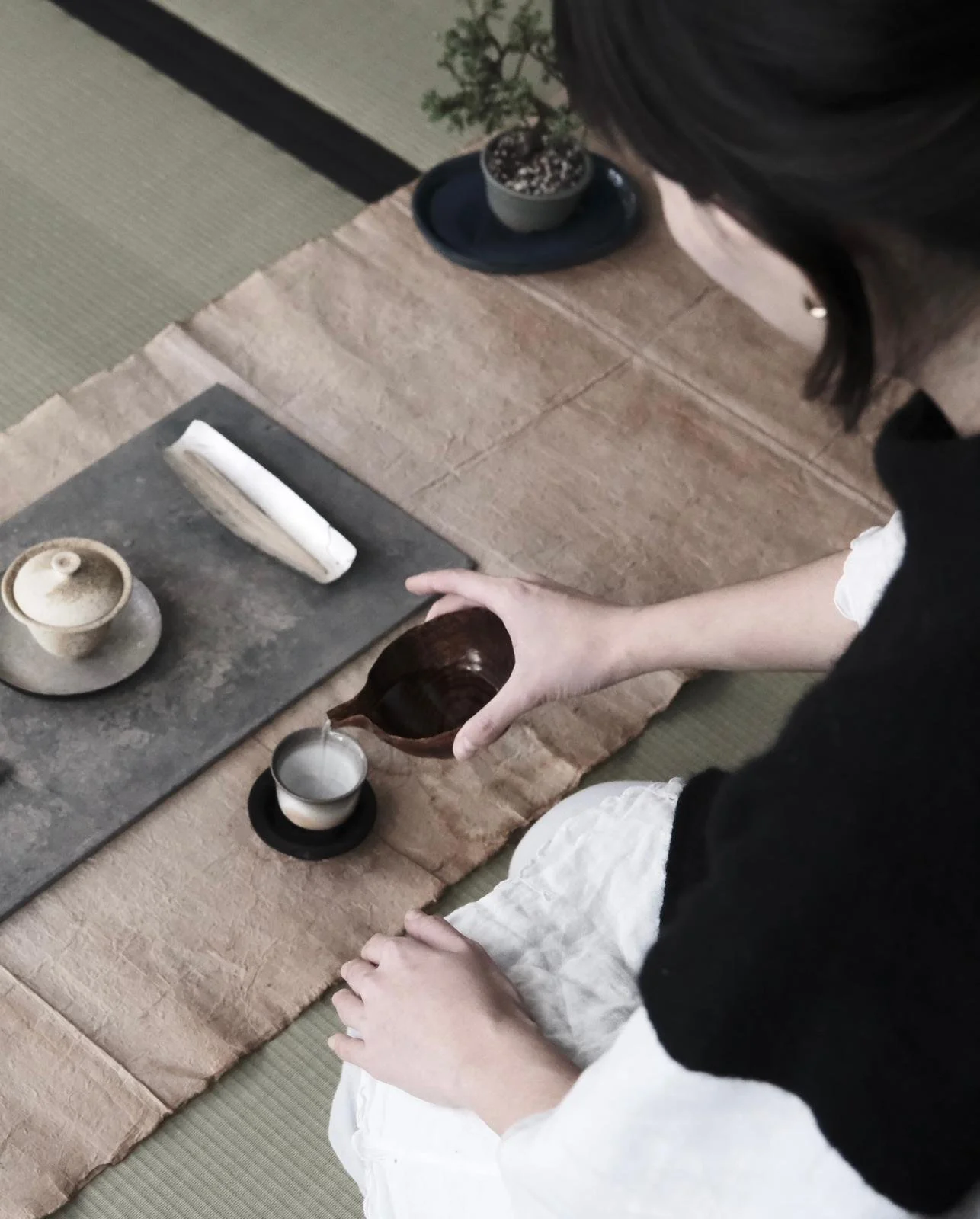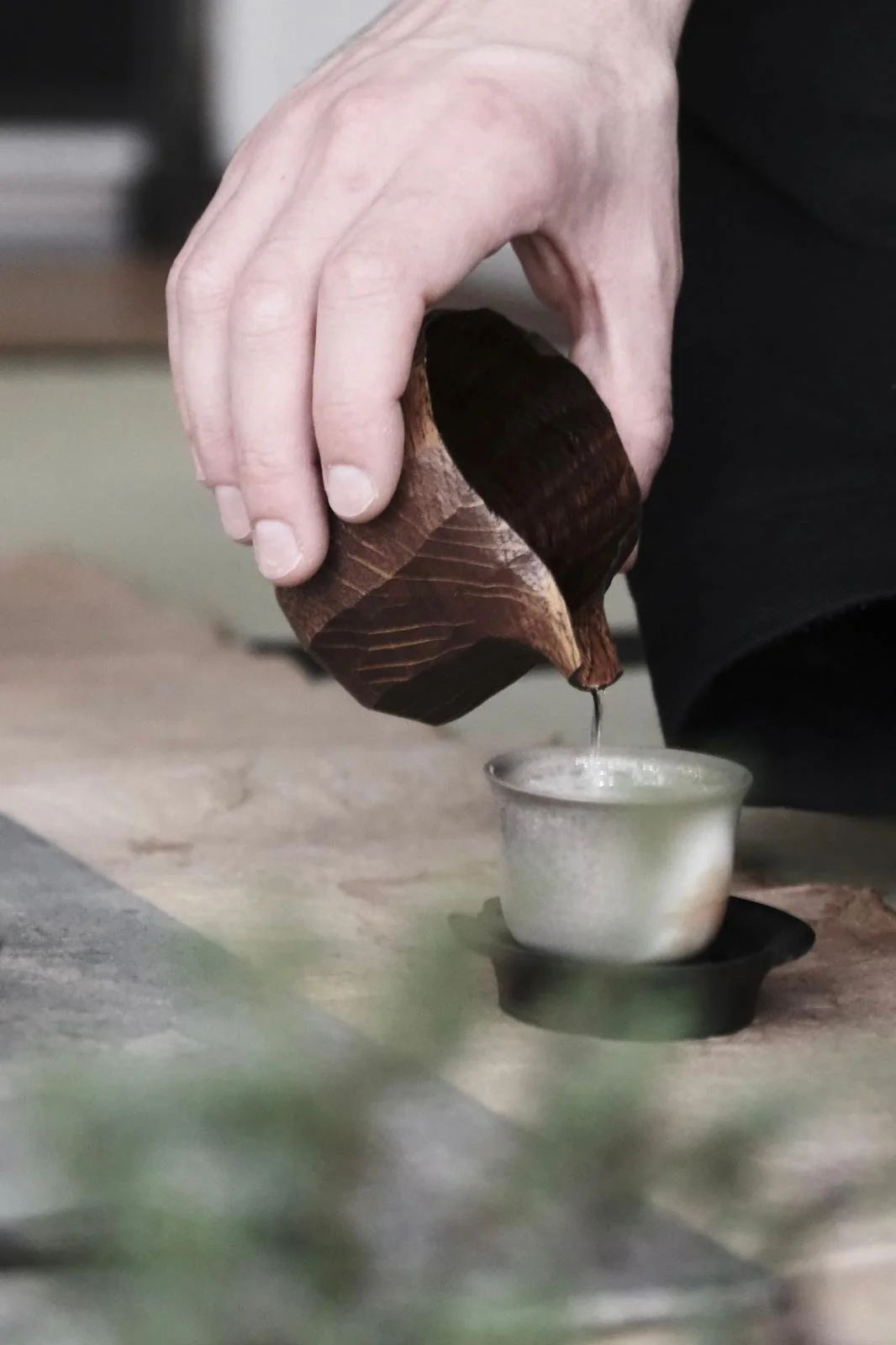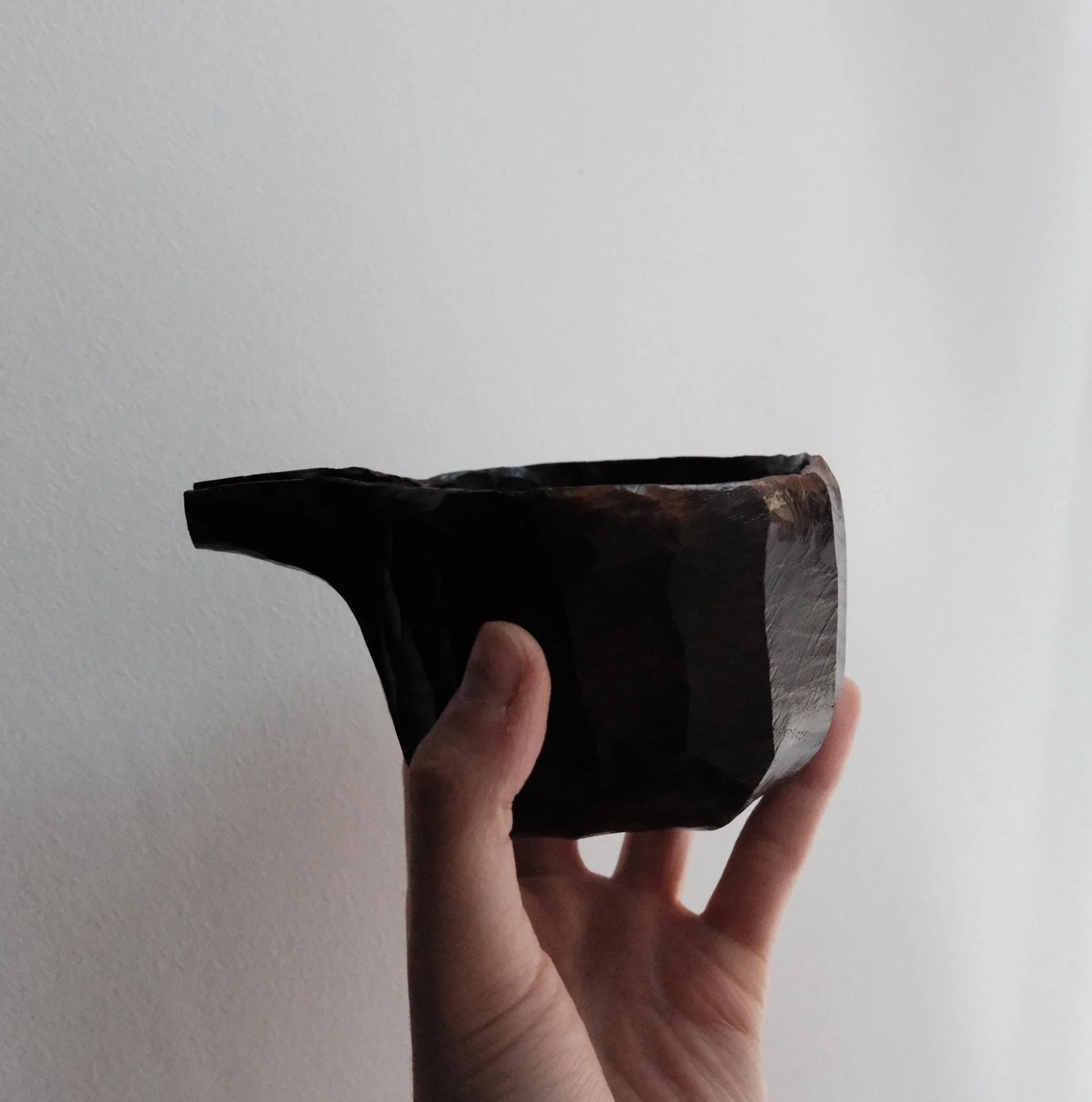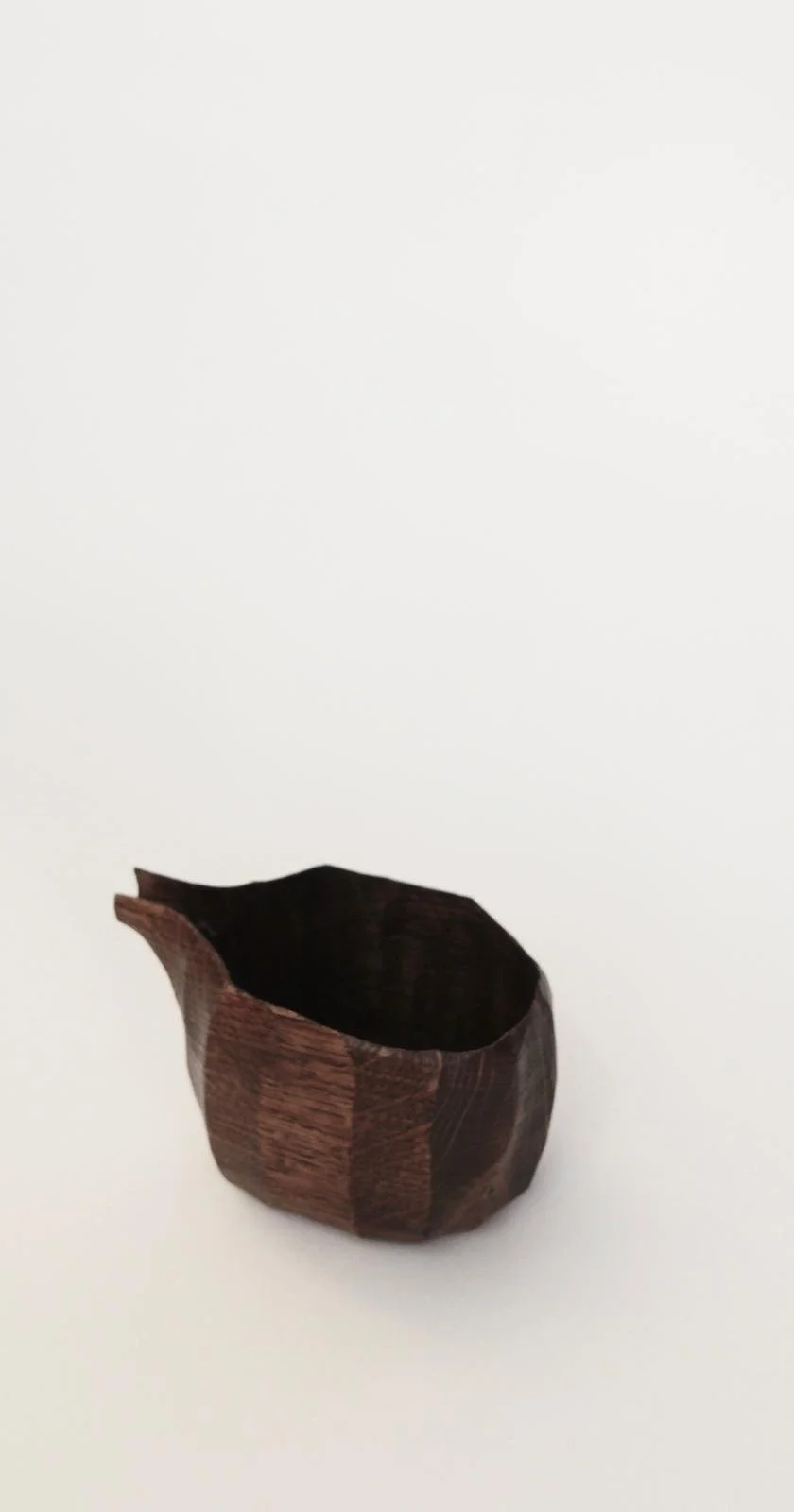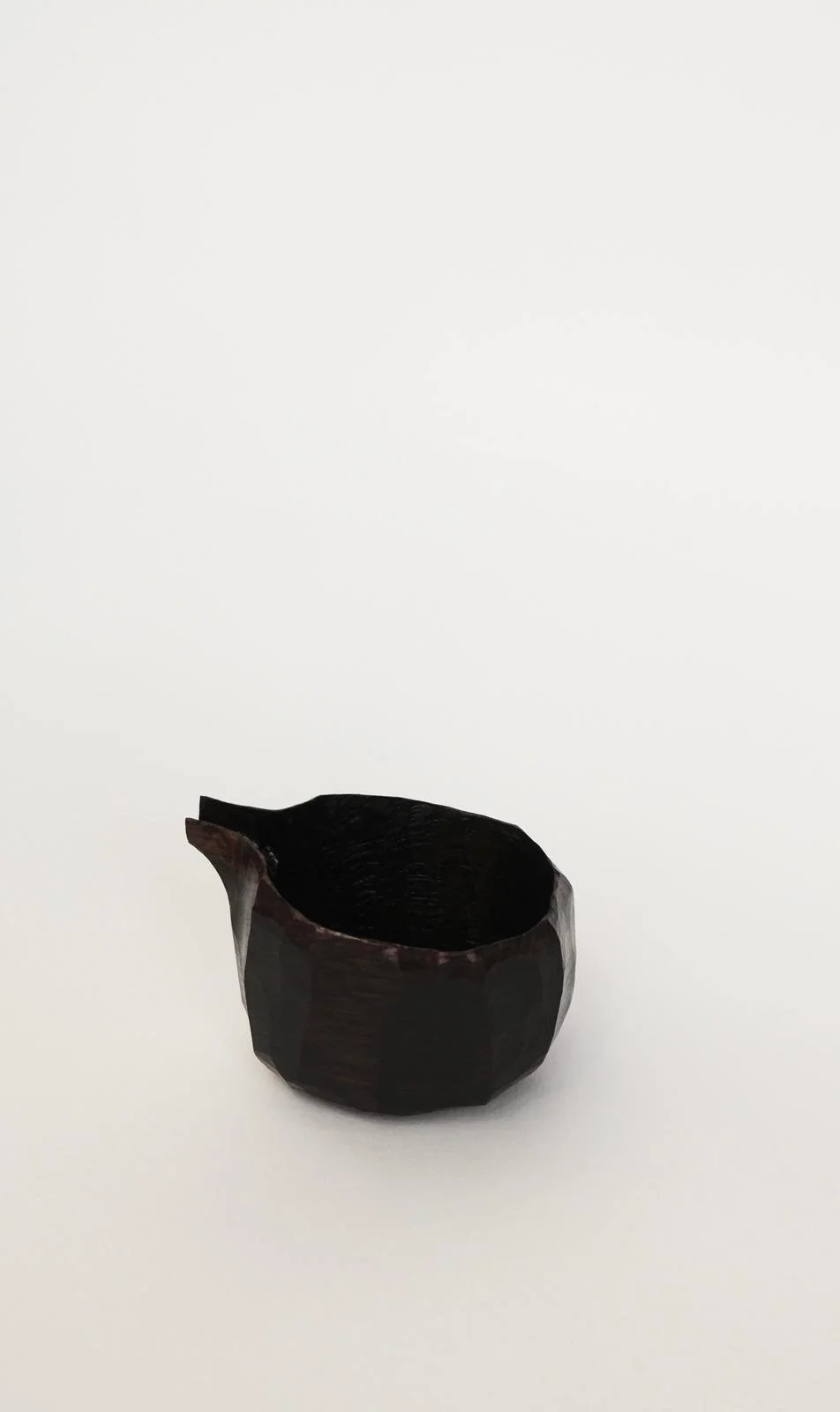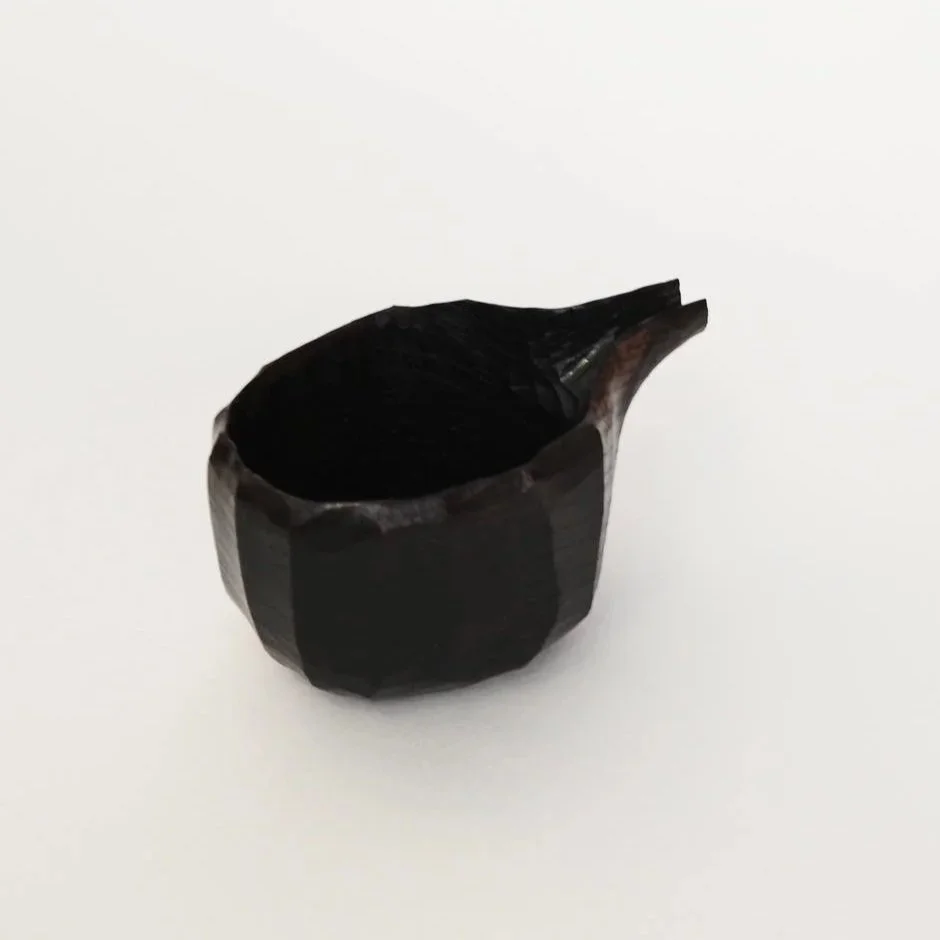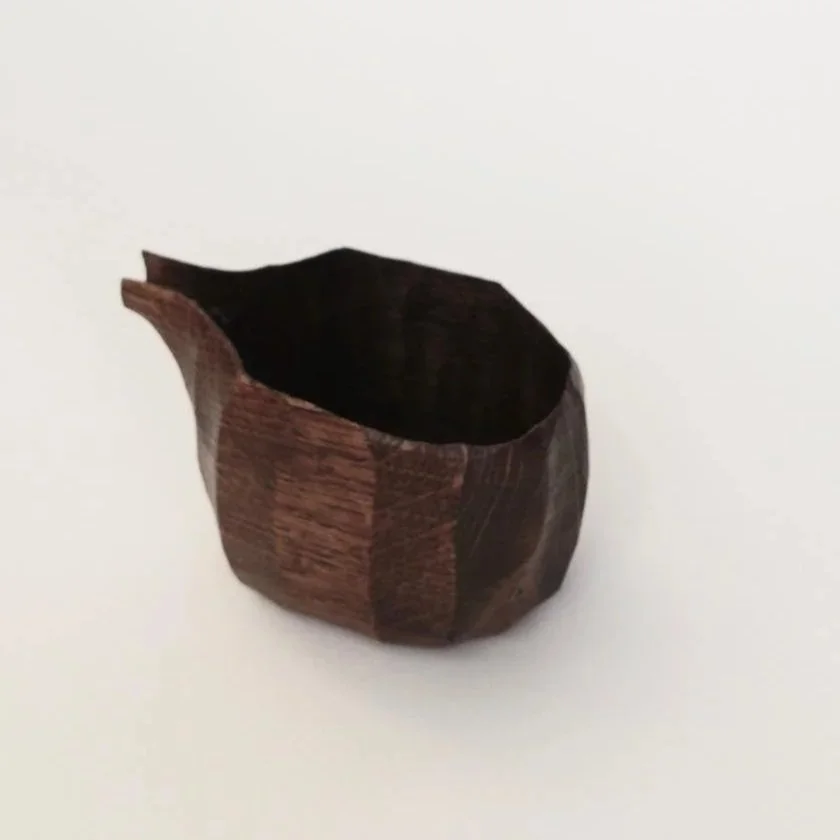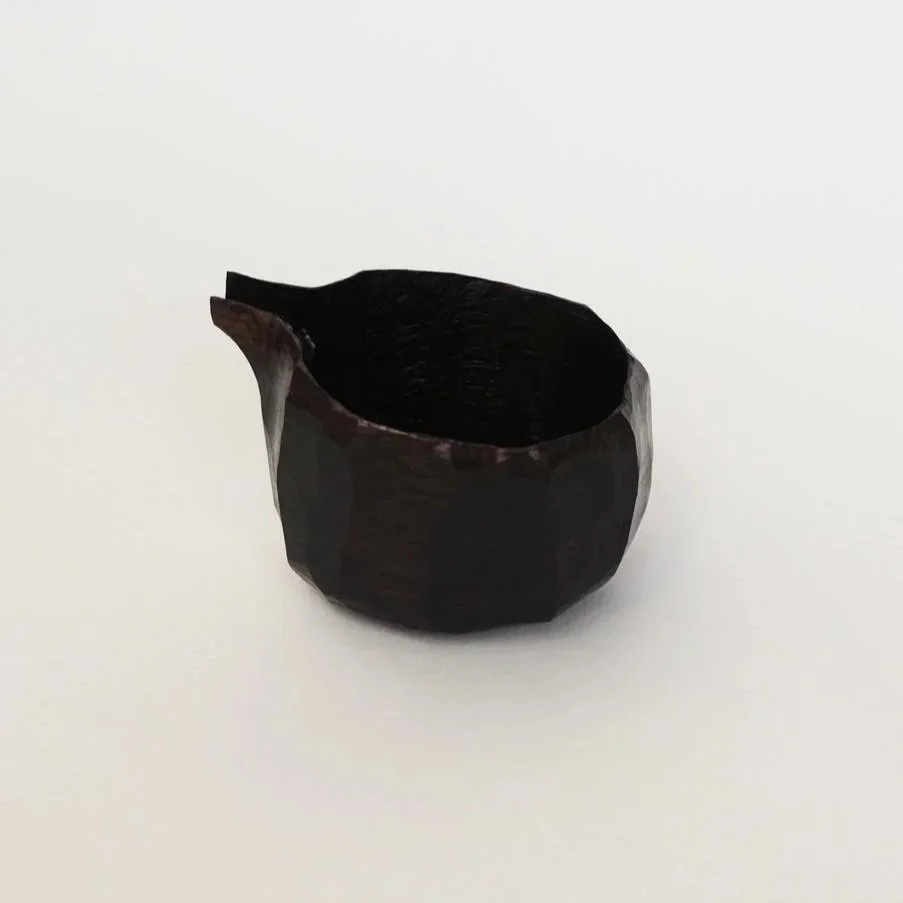Daniel Milbourn
“A love of Trees and Leaves.”
Dan in Yushu Tea Gallery, 2025
In 2020 Dan began wood turning and making sculpture from freshly cut wood; using a method of learning how the wood will transform as it dries, from friend and later mentor, Ernst Gamperl. This continued for some years until Dan saw his first hand-carved vessel that would expand his horizons again. Unbeknown to Dan at the time, this hand-carved vessel was a Gongdaobei and only later, after learning how to make the form he fell in love with, would he learn of it's function in Gongfu Cha.
To make something of beauty and function was the new inquiry which accompanied the journey into Tea. The tools he now uses are simple and his technique is primitive but a great deal of persistence and resilience is needed to learn with no teacher but the process, and material itself. Dan’s use of the Fuki-Urushi technique began in 2024, which he also learned himself in order to move from making only sculptural work to making objects for Tea. Every species of tree carries it's own spirit (as well as each object that is made), and it is for this reason that no two forms are the same. The combination of serving the spirit of each material and the maker's intention to find himself within the work is the endless source of inspiration for it.
Explore more Dan’s Gongdaobei now
Daniel Milbourn was born in the U.K. in 1987, and now lives with his wife in the foothills of the Italian Alps.
Dan's creative work is not bound to one particular medium or form, and stretches across multiple disciplines-blurring the lines that often divide and define the Art and Craft worlds. He is not as interested in the perfection of a technique, as he is in where the work itself is coming from and what the work is asking of him. His understanding of beauty has been honed through his years of spiritual inquiry into eastern teachings and healing, and is what’s really at the heart of his life’s work; but his love of trees and wood have accompanied him since the beginning.
“I’ve been experimenting with ways to display the Gongdaobei”
